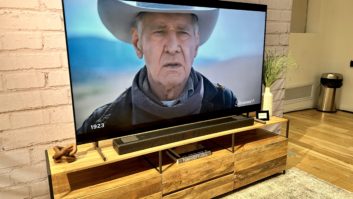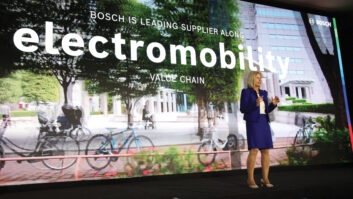Now in the fourth year of a 10-year product plan, Sony is stepping up marketing efforts for its PlayStation Portable (PSP) handheld game system in an effort to catch up with the rival Nintendo DS
Sony executives touring media offices last month said that their handheld player, which was launched as the rival to Nintendo’s successful Gameboy players and more recent Nintendo DS, has now sold more than 38 million units globally and acceptance among age groups has trended lower and lower into hard-core gaming segments.
But even as it cultivates younger gamers, Sony is sticking with its original game plan of marketing the device as a multiplatform portable entertainment system that can compete with Apple’s iPod as much as the Nintendo DS.
When Sony first launched the PSP it had targeted mostly professionals, 28 to 40 years old, who would take it to work every day on subways, trains and taxis. Since then, the purchase demographics have slowly evolved, getting younger and younger, said John Koller, Sony Computer Entertainment PSP senior marketing manager.
The audience has also become more multi-ethnic, with heavy use among urban teens, 15 to 16 years old, from Hispanic, African-American and Asian communities.
“Our audience continues to get younger and younger,” said Koller. “Our research shows that young mothers now have the highest propensity to purchase a PSP over the next year for their children.”
Meanwhile, Koller said, Sony’s decision a year ago to drop the price of the PSP from $199 to $169 and to add a restyled, trimmed-down version in a choice of color options, helped to accelerate sales 85 percent.
Koller attributed the change in PSP’s demographics to how consumers are using the device rather than any specific marketing efforts. He noted the price drop seemed to be a major driver in the urban markets.
Meanwhile, the PSP’s software library continues to expand, he said, with more than 400 total games now available for the platform and 500 movies.
Starting June 3, the company will launch an advertising campaign to support the rollout of the first of two planned PSP entertainment pack releases this year. The first — the God Of War PSP pack — will carry a $199.99 suggested retail and will include a deep red PSP — one of the most highly sought-after colors based on Sony’s consumer research — and a silkscreen image of the game’s key character Kratos. It will also offer copies of the God Of War game and the Sony Pictures’ movie “Superbad” on UMD disc.
On Aug. 12, Sony, in association with EA, will offer a $199 suggested retail entertainment pack featuring a metallic blue PSP system, NFL: In Just One Play on UMD video, a voucher to download the game Beats from the PlayStation Network, and a 1GB Memory Stick Pro Duo along with a copy of Madden NFL 09.
Also this year, Koller said, Sony’s forthcoming marketing efforts will start to put more emphasis on women — a segment that so far has not shown much interest in portable game players.
Sony continues its original mission to grow the multifunctional aspect of the PSP beyond just game play, and will seek to promote its crossover appeal as an adjunct to the PlayStation3 home-based video game console. Koller said the PSP team is carefully monitoring consumer demand as it plans and releases new features and services for the player.
In recent months, the company has added such functions as an RSS browser; compatibility with Sony’s Location Free TV system, which enables remote playback of content from entertainment systems in the home; Skype VoIP phone service; and Internet radio capability with access to more than 22,000 Internet radio stations.
Next on the list will be a GPS system that will convert the PSP into a full functioning handheld GPS navigation device. The adapter kit — which will include a mounting bracket for use in the car, a UMD disc with mapping software and an antenna that plugs into the PSP’s USB jack — is due out in the next 10 to 12 months at a price to be announced.
The feature will launch with support for 24 top U.S. cities and Toronto, and with new North American and international markets to be added continually.
Koller said the GPS package will be aggressively priced to compete with entry-level navigation systems.













